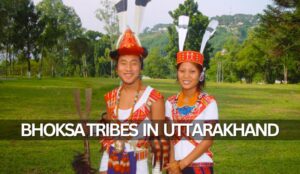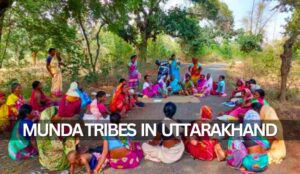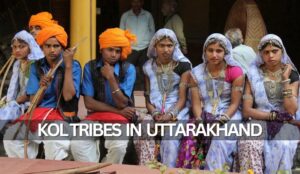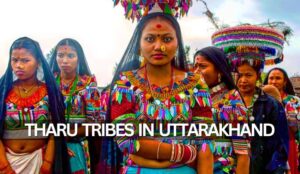“Discover the enchanting Kafni Glacier trek 🏔️❄️ Unveil nature’s beauty and adventure in Uttarakhand’s Himalayas! #KafniGlacier”
About Kafni Glacier:
1. Location and Geography:
- The Kafni Glacier is situated in the Kumaon region of Uttarakhand, India.
- It lies in the eastern part of the Indian Himalayas, within the Nanda Devi National Park.
2. Glacier Formation:
- The Kafni Glacier is a result of accumulated snow and ice over thousands of years.
- It is a “hanging glacier,” meaning it is positioned at a higher altitude on a mountain slope.
3. Glacial Features:
- The glacier feeds into the Kafni River, a tributary of the Pindar River.
- Surrounded by towering peaks, the glacier creates a mesmerizing and picturesque landscape.
History of Kafni Glacier:
1. Exploration and Discovery:
- The Kafni Glacier, like many other glaciers in the Himalayas, gained attention during the British colonial era.
- It was likely explored by early British surveyors and explorers mapping the region.
2. Ecological Significance:
- The glacier and its surrounding region fall within the Nanda Devi Biosphere Reserve, a UNESCO World Heritage Site.
- This area is crucial for biodiversity conservation and supports various flora and fauna.
3. Glacial Retreat and Climate Change:
- Like many glaciers worldwide, the Kafni Glacier has experienced retreat due to climate change.
- The melting of glaciers has implications for water resources and ecosystems downstream.
4. Trekking and Adventure:
- The Kafni Glacier is a popular trekking destination for adventure enthusiasts.
- The trek offers breathtaking views of the glacier, alpine meadows, and the surrounding peaks.
The Kafni Glacier, nestled within the pristine landscapes of Uttarakhand, holds both ecological and adventure significance. Understanding its formation, history, and challenges associated with climate change is crucial for appreciating its beauty while also acknowledging the importance of preserving our fragile natural environments.
Location of Kafni Glacier:
1. Geographic Setting:
- The Kafni Glacier is situated in the Indian state of Uttarakhand.
- It lies in the Kumaon region of the mighty Himalayas, in the eastern part of the state.
2. Specific Region:
- The glacier finds its home within the boundaries of the Nanda Devi National Park.
- This protected area is renowned for its natural beauty and ecological significance.
3. Flanked by Peaks:
- The glacier is surrounded by towering peaks and rugged terrain, forming a stunning backdrop.
- The surrounding landscape adds to the glacier’s grandeur and allure.
Nestled within the heart of the Himalayas in Uttarakhand, the Kafni Glacier captivates with its geographical location and historical context.
As we delve into its history and ecological significance, it’s evident that the glacier not only offers a glimpse into the past but also serves as a mirror reflecting the challenges of our changing climate. Its allure as a trekking destination further underscores the connection between nature’s beauty and our innate human spirit of adventure.
The Significance of the Famous Kafni Glacier:
1. Natural Splendor:
- The fame of Kafni Glacier stems from its breathtaking natural beauty and stunning surroundings.
- Nestled in the Himalayas, the glacier is admired for its snow-clad peaks, pristine landscapes, and rugged terrain.
2. Ecological Importance:
- The glacier’s fame also arises from its location within the Nanda Devi Biosphere Reserve, a UNESCO World Heritage Site.
- The reserve’s conservation value and rich biodiversity contribute to the glacier’s significance.
3. Adventure and Exploration:
- The allure of Kafni Glacier lies in the opportunities it offers for adventure and exploration.
- Trekkers and mountaineers are drawn to the glacier’s challenging terrain and the sense of accomplishment it offers.
Things to Do in Kafni Glacier:
1. Trekking Expedition:
- The glacier is a prime destination for trekkers seeking an offbeat and challenging adventure.
- The trek offers an up-close encounter with the glacier’s beauty and the mesmerizing landscapes en route.
2. Scenic Photography:
- Capture the picturesque beauty of the Kafni Glacier through photography.
- The glacier’s icy landscapes, meadows, and towering peaks provide a visual feast for photographers.
3. Nature Observation:
- Engage in nature observation and wildlife spotting within the Nanda Devi Biosphere Reserve.
- The region’s diverse flora and fauna, including rare and endemic species, make for an enriching experience.
4. Cultural Interaction:
- Interact with local communities in the region to gain insights into their way of life and culture.
- This can enhance your understanding of the relationship between nature and the local inhabitants.
5. Meditation and Reflection:
- Take advantage of the serene environment to engage in meditation or personal reflection.
- The tranquil surroundings of the glacier and its environs provide an ideal setting for introspection.
The fame of the Kafni Glacier arises from its remarkable natural beauty, ecological significance, and opportunities for adventure. Whether you’re embarking on a challenging trek, capturing its magnificence through photography, or immersing yourself in its pristine surroundings, the glacier offers a multifaceted experience that resonates with nature enthusiasts, explorers, and those seeking a deeper connection with the environment.
Essential Information about Kafni Glacier:
1. Location and Geography:
- Kafni Glacier is situated in the Kumaon region of Uttarakhand, India.
- It finds its place within the Nanda Devi National Park, renowned for its ecological significance.
2. Formation and Characteristics:
- Kafni Glacier is a result of accumulated snow and ice over centuries.
- Its breathtaking beauty is accentuated by the surrounding Himalayan peaks and alpine landscapes.
3. Glacial Feed:
- The glacier contributes to the Kafni River, a vital tributary of the Pindar River.
- The flow of this river is augmented by the melting ice from the glacier.
How to Reach Kafni Glacier:
1. Base Point:
- Start your journey from the village of Loharkhet, which serves as the base for the trek to Kafni Glacier.
- Loharkhet can be reached from major towns like Almora or Bageshwar by road.
2. Trekking Route:
- Embark on a trek from Loharkhet that will take you through quaint villages and lush forests.
- The trail offers glimpses of local life and captivating scenery.
3. Khati Village:
- En route, you’ll reach Khati village, the last inhabited village on the route.
- It’s a place to rest, refuel, and interact with locals before continuing the trek.
4. Zero Point and Glacier Views:
- The trek culminates at Zero Point, where you’ll be greeted by panoramic views of the Kafni Glacier.
- The glacier’s awe-inspiring beauty makes the journey truly worthwhile.
5. Guided Expeditions:
- It’s recommended to undertake this trek with a local guide who knows the route and terrain well.
- Guides ensure safety and provide insights into the region’s culture and nature.
Kafni Glacier offers a remarkable journey through pristine landscapes and glacial beauty. With proper planning, guided expeditions, and a love for adventure, you can experience the glacier’s grandeur and appreciate the trek’s cultural and natural facets.
Travel Tips for Exploring Kafni Glacier:
1. Physical Fitness and Acclimatization:
- Prepare physically by engaging in cardio exercises and building stamina for the challenging trek.
- Acclimatize gradually to the altitude to minimize the risk of altitude sickness.
2. Proper Gear and Clothing:
- Pack essential trekking gear including sturdy hiking boots, warm clothing, rain gear, and a hat.
- Don’t forget sunscreen, sunglasses, a first aid kit, and a water bottle.
3. Hydration and Nutrition:
- Stay hydrated by drinking plenty of water throughout the trek.
- Carry energy-rich snacks to keep your energy levels up during the journey.
4. Local Customs and Respect:
- Respect local customs and traditions, especially when interacting with the communities you encounter.
- Seek permission before taking photographs of people or their property.
5. Guided Trekking Expeditions:
- Consider hiring a local guide for the trek. They possess valuable knowledge about the route, terrain, and local culture.
- Guides enhance your safety and provide enriching insights into the region.
Best Time to Visit Kafni Glacier:
1. Late Spring to Early Summer (May to June):
- This period offers pleasant weather and clear skies, ideal for trekking.
- The trail is vibrant with blooming flowers and lush greenery.
2. Late Summer to Early Autumn (September to October):
- Post-monsoon, the weather stabilizes, offering comfortable trekking conditions.
- The landscape remains captivating with the added bonus of post-rain freshness.
3. Note:
- Avoid the monsoon season (July to August) due to heavy rainfall and potential landslides.
- Winter (November to April) is harsh with extreme cold and heavy snowfall, making it unsuitable for trekking.
For an enriching experience at Kafni Glacier, prioritize physical fitness, respectful interaction with locals, and proper trekking gear. The best times to visit are late spring to early summer and late summer to early autumn. By adhering to travel tips and choosing the right time, you can embark on a safe and fulfilling journey through the pristine landscapes leading to the mesmerizing Kafni Glacier.
Dining Options Near Kafni Glacier:
1. Local Eateries:
- Explore nearby villages for local eateries and dhabas offering authentic regional cuisine.
- Enjoy local dishes while experiencing the flavors of the Kumaon region.
2. Loharkhet Village:
- Loharkhet, the starting point for the Kafni Glacier trek, may have basic food stalls and small restaurants.
- Look for simple meals that provide sustenance for the journey ahead.
Nearby Places to Explore Around Kafni Glacier:
1. Khati Village:
- Khati, en route to Kafni Glacier, offers a glimpse into local life and culture.
- You might find basic eateries serving local fare to refuel during your trek.
2. Zero Point View:
- At the trek’s culmination, Zero Point offers breathtaking views of the glacier.
- While not a dining spot, it’s an ideal spot for a packed lunch amidst nature’s splendor.
3. Pindari Glacier:
- While not immediate, the nearby Pindari Glacier is another trekking destination.
- Accommodation here might offer meals as part of your trekking package.
4. Villages Along the Route:
- Keep an eye out for small settlements along the trekking path.
- While dining options may be basic, they can provide much-needed sustenance during your journey.
5. Return to Loharkhet:
- On your return, you can again explore dining options in Loharkhet village.
- Savor a meal after the trek and celebrate the accomplishment.
While dining options near Kafni Glacier are limited due to its remote location, you can find local eateries in nearby villages like Khati and Loharkhet. The focus here is on sustenance and local flavors. Additionally, the trek itself offers opportunities for picnics amidst stunning landscapes. Remember that the journey’s beauty extends beyond culinary experiences, as you explore nearby places that showcase the region’s natural and cultural diversity.
Conclusion:
Kafni Glacier, nestled in the Himalayan haven of Uttarakhand, holds a special allure for adventurers and nature enthusiasts alike. Its remarkable formation, ecological significance, and trekking opportunities make it a gem worth exploring. From the challenging trek to the serene landscapes, Kafni Glacier offers a journey that not only tests your physical abilities but also connects you with the raw beauty of the mountains.
Frequently Asked Questions (FAQs) about Kafni Glacier:
1. Where is Kafni Glacier located?
- Kafni Glacier is situated in the Kumaon region of Uttarakhand, India.
2. What is unique about Kafni Glacier’s formation?
- Kafni Glacier is a “hanging glacier,” nestled at an elevation within the rugged Himalayan landscape.
3. How does Kafni Glacier contribute to the environment?
- The glacier feeds the Kafni River, adding to the water resources downstream.
4. What’s the best way to reach Kafni Glacier?
- The trek starts from Loharkhet village, accessible by road from towns like Almora or Bageshwar.
5. When is the ideal time to visit Kafni Glacier?
- Late spring to early summer (May to June) and late summer to early autumn (September to October) offer the best trekking conditions.






